WE’RE STILL THINKING
A grassroots art collective takes matters into its own hands.

At Vanderbilt University, a villainous institution that buries its deceit under renovations and revisionism, something maddening—more maddening, even, than the school—happens every March. As usual, upstart undergrads leaf through books they aren’t going to finish. This isn’t new. The new, concerning thing is this: now that the sun’s out, they’re doing it leaning up against itchy tree stumps, yearning for campus photographers to immortalize them on Instagram. The fits get more ambitious, which means, in most cases, they also get more atrocious. And underneath all this ardor, all this attention-seeking, is Nothing. There’s nothing behind the smart-watch-wearing wrists, nothing behind the admin emails beeping said smart-watch-wearing wrists, nothing behind the clout each of these things is wielded to convey. Nothing but money.



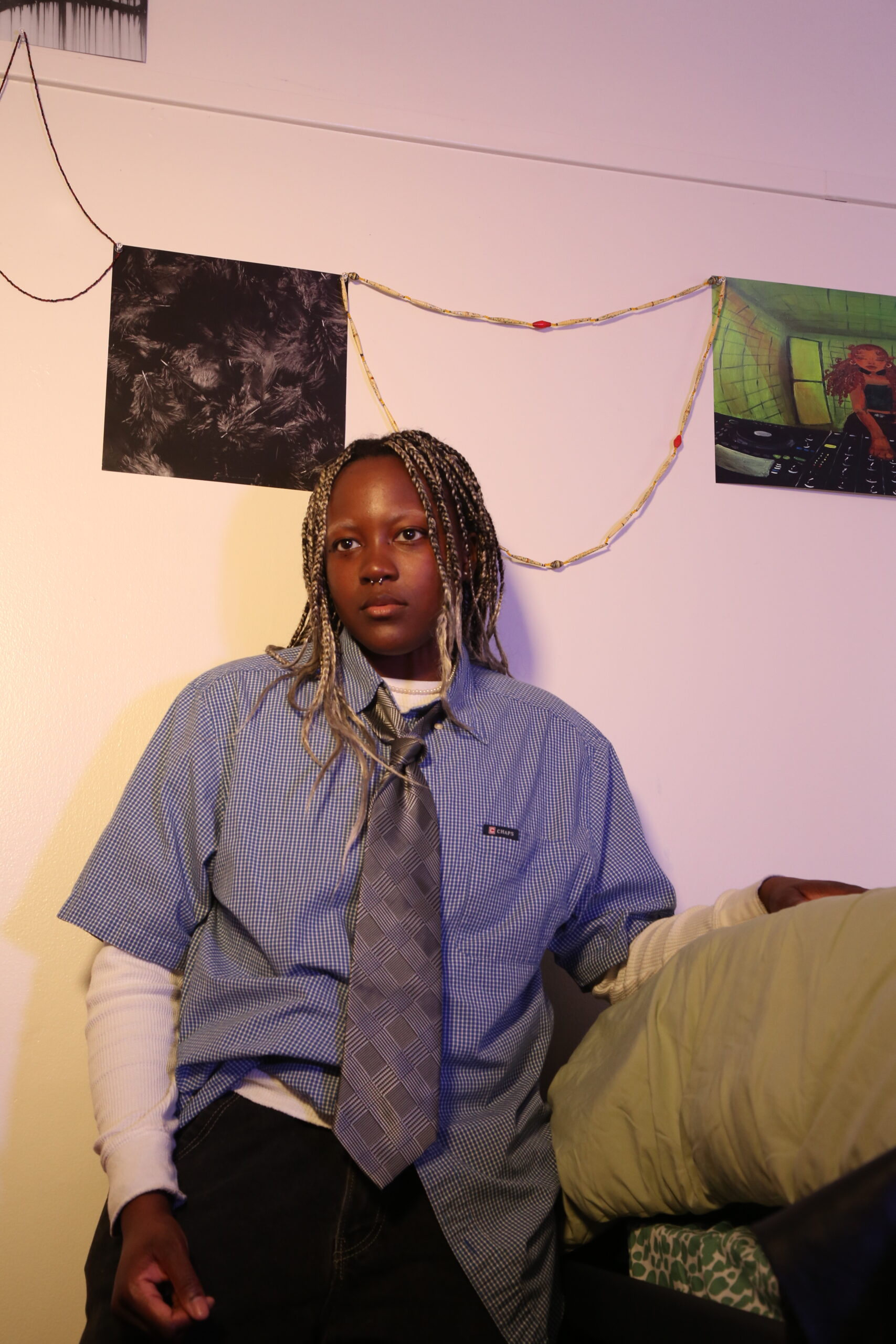
“I want our generation to not have to chase after these huge corporations, and beg them for a chance to display our art. We can do it ourselves.”
One afternoon this past March, while posteriors perched on plants in search of nearby photographers, Lesleigh Taylor (‘25) and Igolo Ohalete (‘24) sat huddled in Begonia Labs, a homely off-campus studio space that caters to metro Nashville’s art-adjacent young adults. Taylor and Ohalete are co-collaborators in WRST (We’re Still Thinking), a student-run initiative that has sought, over the past several months, to remove itself from Vanderbilt’s splintered fashion infrastructure. Spread before them, on a sleek coffee table, was an intimidating spread of print objects—loose inspo for an in-progress print object of their own—and a more intimidating number, scrawled across a marked-up notepad in sloppy ink: $400. Of a sizable sum granted to them by Vanderbilt’s Immersion office, it was all they had to allocate towards printing. And by some metric, it was pretty generous. Since about 2018, all students enrolled in Vanderbilt’s School of Arts & Sciences have been required to complete an “Immersion Project,” something of a faculty-supervised marriage between the college classroom and the cruel world. For her own, Taylor felt inclined to (1) mold a concrete Black-centric fashion enclave, and (2) do it on the school’s white dollar. In her case, that white dollar amounted to about 2,000 green ones, ripe for delegation towards photoshoots, styling expenses, and miscellaneous last-minute needs. But with these dollars, there also came a 2,000-dollar dilemma: building a vehicle while it moves is perennially difficult. It’s even more difficult when you only have about two weeks left to do it.
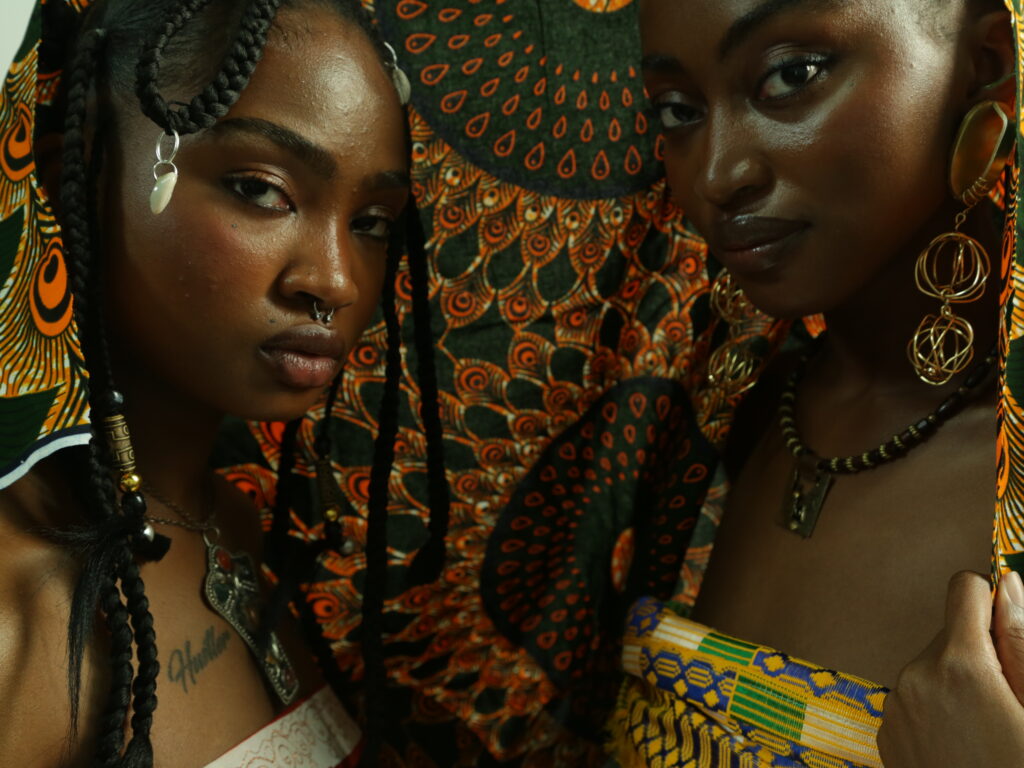

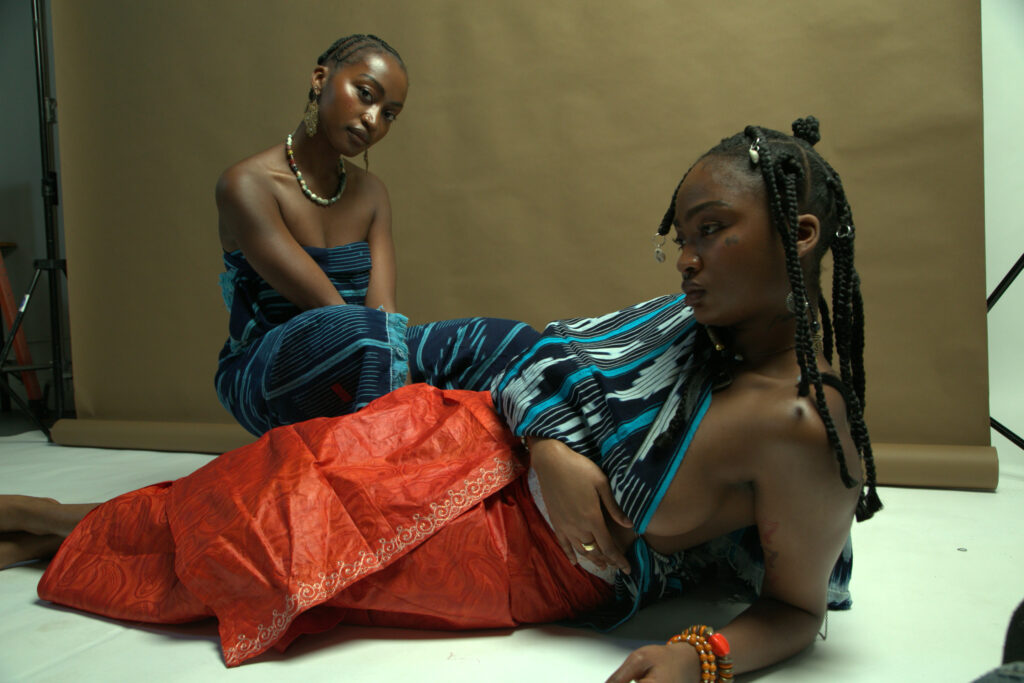

“If you get a thought, why not just do it?”
At Begonia, Taylor and Ohalete were being guided through the inventory of print artifacts—artist booklets, exhibition catalogs, ambitious mini-brochures—by a friendly man named Simon, who was there to help them scope out metrics. While the trio pored over the hefty haul, Ohalete sparked up, suddenly, to ask a question. She’d been holding a large-scale publication that was printed on newsprint; on one of its pages, a two-column text section was backgrounded by a dark square, peppered with woozy, squiggly lines. Her question pertained to color-printing choices, and what they’d cost, but her phrasing underscored a far deeper one: “What about black space?”, she asked.
Though more related to people than printers, Taylor is concerned with something similar. She started studying at Vanderbilt in 2021, a strange transitional period that sought to mend, slowly and surely, a number of the school’s fresh, festering wounds. As was true for any institution, there was COVID to be contended with. But deep down in Vanderbilt’s doldrums, and as much as the school attempted to hide it, there had also been fissures along demographic lines—high up among them, for instance, being the race-borne Greek Life scandal that had erupted the previous year, and the contested mid-pandemic VSG election that gushed into something alienating and abusive. Though WRST isn’t a direct response to any of these things, it represents an increasingly-vital command of student autonomy, student independence—especially when, as is proven perennially, no Diermeier nor Doctor-Kirkland-dweller will descend from high-up offices to hear voices, let alone help them. For all WRST’s independent ethos, it operates on an impulse with seismic, school-wide implications.

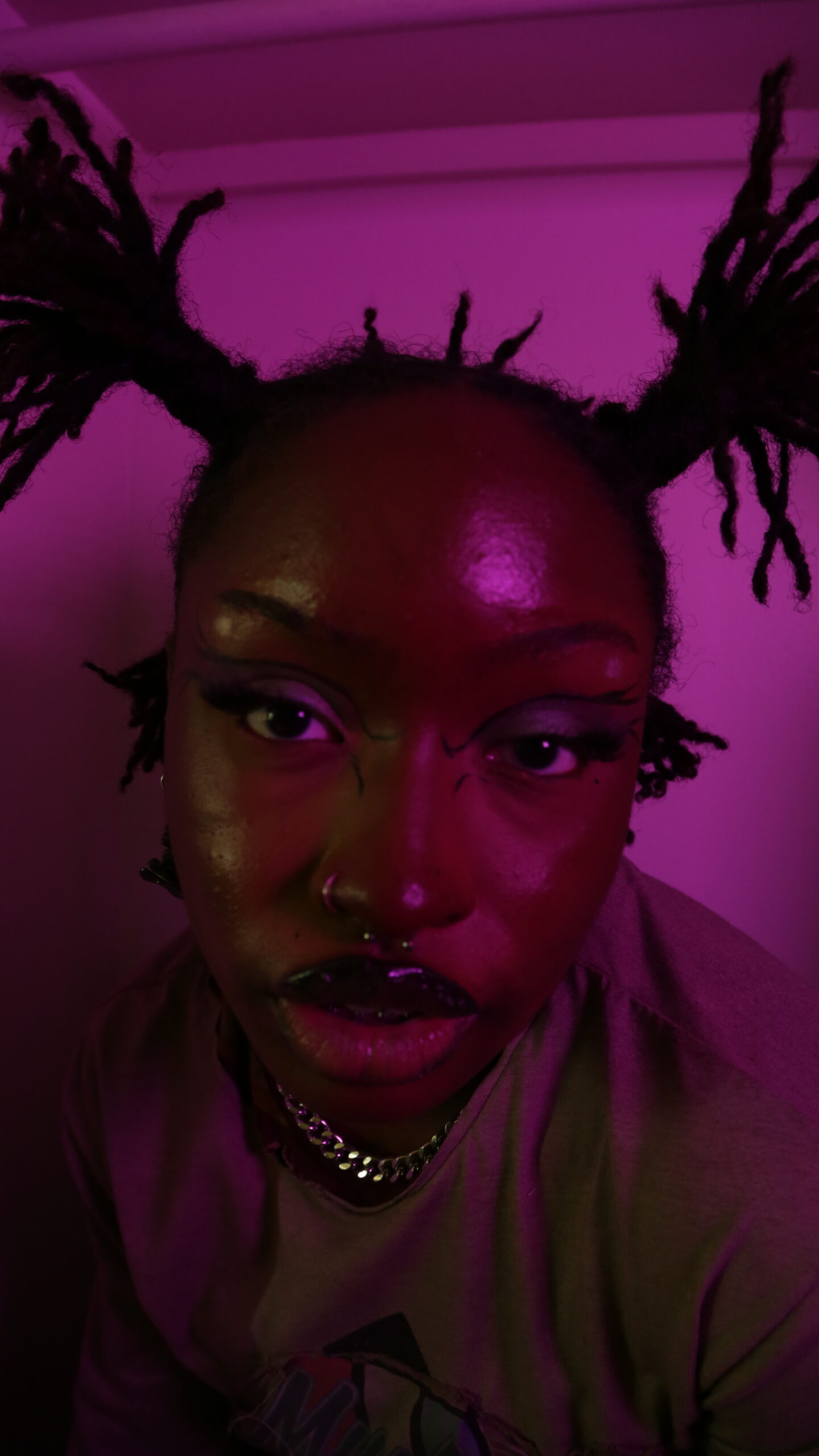


“With past projects, there was already a group that was organizing things. You don’t give input on where things should go, they tell you. Which works. That’s their project. But this is our project. And we do it our way.”
Taylor comes across as a firebrand: she talks as if she’s reading from a caffeinated teleprompter, runs WRST like it’s a Fortune-500 company (which isn’t to say she runs it inequitably), builds community without bossing it. But for a while, as unthinkable as it may seem, she felt she wasn’t being heard the way her output demanded. One Thursday evening this past February, she sat criss-cross-applesauce on the floor of her dorm-room, a Highland double she’s lucky enough to live in alone. (Taylor’s roommate graduated last semester.) There had been a WRST photoshoot a few days prior; surrounding her in the common space was a coterie of 70s-themed props: a Khruangbin vinyl record; a weighty vintage playback device lent by an art-major friend; an assemblage of disparate discs, posters, playthings. “In the past year and a half, I have been very intentional about building up my confidence—building up my ability to believe in myself,” she said. “It helps that I have a lot of cool people around me, who encourage me to do that. But it’s an ever-growing project.”
Much of WRST’s modus-operandi, in practice, hinges on watering the “ever-growing”—not only for Taylor, but for the various budding artistic entities represented by its tight-knit roster. “(Other Vanderbilt fashion organizations) didn’t view Black voices in the way that Black voices—Black people—wanted to voice themselves,” Sydney Featherstone (‘24), a WRST photographer, said at Begonia later on in March. Though Featherstone has long fielded an interest in creative photography, WRST represents the first on-campus chance she’s had to hone it freely, without adherence to tiered systems. “But here, we get to do that. And we get to do that in a multitude of ways. Like, I get to be an earthy Black girl, and show that. And Les gets to be a fashionista Black girl, and show that. That’s a big part of why I’m so passionate about this project.” Jeanne d’Arc Koffi (‘24), a phtographer for WRST, shares the group’s common interest in the arts, but also sees the collective as a fresh means of grassroots self-education. “We understand that we’re not experts in how to use this equipment, or how to do this, that, and the third,” she said. “We’re more interested in learning that process. With me, for example, learning the (lighting equipment) the day of the shoot—that’ll be helpful to me in the future, because I know that I want to be involved in these spaces, where we’re putting things together creatively. All these things are going to be useful to me in the future, and I think everyone feels the same way.”

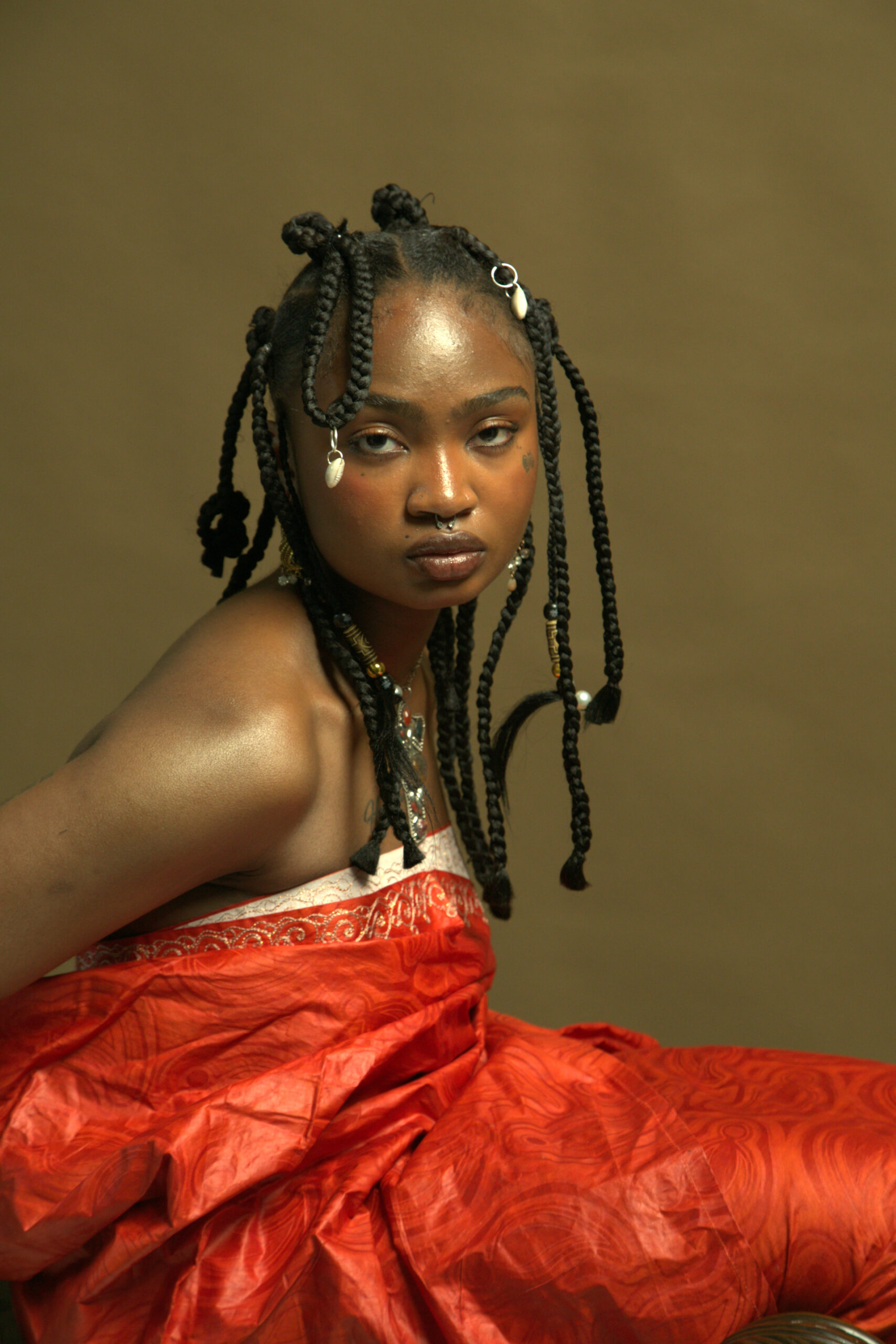
One Saturday at Koffi’s Highland suite, the group’s ragtag learn-as-you-go ethos was on full display. There was a rock-themed WRST shoot scheduled for 2, and by a quarter to call time, the living room was a blur of bodies and beverages: impromptu lighting lectures interrupted by the occasional whir of a blender; the scattered entrails of a borrowed drum kit; frantic preparatory phone calls amidst frantic preparatory furniture rearrangements. At one point, as the apartment slowly metamorphosed into a set, Sierra Dix, the day’s featured model, stood between the kitchen counter and the hotbed of instruments, reckoning with their newfound role. Dix hadn’t modeled in this capacity before—they designed clothes, some of which were actively being consulted for WRST. But under the collective’s encouragement, they were not only charting new artistic terrain, but doing it alongside like-minded people who listened. “It’s made me more confident in my styling,” they said. “I would make suggestions, and people would actually listen. Like, ‘Oh, great idea.’ And I’d be like, ‘Oh, really?’”
Over the next few hours, observing the shoot felt like observing myriad things at once: a group of aspirants, a group of artists, and a group of amateurs, but, most importantly, a group of friends. And, come Friday, April 26th, they’re inviting you to a party. More information below.
⚫⚫⚫
Two weeks from today, WRST and Sammy’s World are hosting a joint event at Begonia Labs to celebrate the launch of a print publication. The zine features additional photos taken over the past four months. Limited copies will be available. Come party with us! — WRST x SMMYSWRLD
RSVP
CREDITS
SHOOT 1
Title: soulmate(s)
Concept Lead: Lesleigh Taylor
Photographers: Igolo Ohalete, Jeanne d’Arc Koffi, Sydney Featherstone
Videographers: Ade Forrest
Models: Eva Cheraisi, Nia Legba, Tyler Enenmoh
Beauty: Lesleigh Taylor (makeup, hair), Sierra Dix (makeup, nails)
Styling: Lesleigh Taylor, Sierra Dix
Featuring clothes by: Sierra Dix
SHOOT 2
Title: Décalé
Concept Lead: Jeanne d’Arc Koffi & Igolo Stephine
Photographers: Igolo Stephine
Videographers: Igolo Stephine
Models: Jeanne d’Arc Koffi, Grace Koffi
Beauty: Lesleigh Taylor, Grace Koffi
Styling: Igolo Stephine, Lesleigh Taylor
Featuring Ivorian and Nigerian fashions
SHOOT 2.5
Title: Interlude
Concept Lead: Jeanne D’Arc Koffi & Igolo Stephine
Photographers: Jeanne D’Arc Koffi, Sydney Featherstone
Models: Sierra Dix
Beauty: Sierra Dix, Lesleigh Taylor
Styling: Lesleigh Taylor, Sierra Dix
Featuring clothes from SECLUDE by Jaidyn
